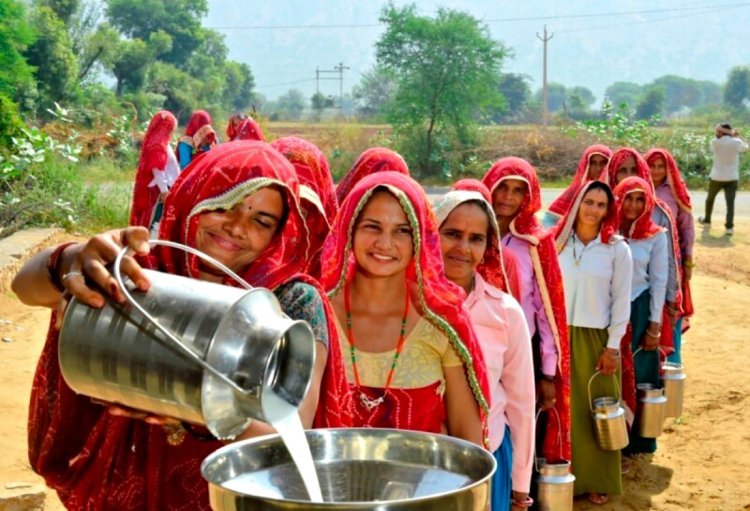Milk is a cornerstone of human nutrition, providing high-quality proteins, essential vitamins, and minerals that underpin growth, immunity, and overall health. India, as the world’s largest milk producer, contributes nearly a quarter of global supply, positioning its dairy industry at the intersection of food security and rural economic development.
Rising Production and Supply
India’s milk output has surged by 63.5% over the last decade, increasing from 146.3 million tonnes in 2014–15 to 239.3 million tonnes in 2023–24. This represents an annual growth rate of 5.7%, underscoring the sector’s remarkable expansion. Per capita availability has risen to 471 grams per day, significantly above the global average of 322 grams, reflecting enhanced nutritional access for the population.
Women and Cooperatives: The Backbone of Dairy
The sector’s growth is intimately linked with its 80 million farmers, a substantial proportion of whom are women. Women constitute nearly 70% of the dairy workforce, and more than 48,000 women-led cooperatives actively contribute to economic empowerment in rural households. Covering approximately 235,000 villages, these cooperatives form the backbone of India’s dairy supply chain, facilitating procurement, marketing, and knowledge dissemination.
Technological Innovation and Veterinary Support
Government initiatives such as the Rashtriya Gokul Mission and targeted artificial insemination programmes have enhanced bovine productivity by an estimated 27%. With over 140 million artificial inseminations conducted and 22 in vitro fertilisation (IVF) laboratories operational, India is strengthening both milk output and livestock quality. These advancements are complemented by veterinary support services, ensuring healthier and more productive herds.
White Revolution 2.0
The launch of White Revolution 2.0 in 2024 marks the next phase of India’s dairy transformation. The programme aims to expand cooperative coverage, increase milk procurement to 1007 lakh kilograms per day by 2029, and promote sustainable practices including organic manure utilisation and biogas production. This initiative exemplifies the sector’s commitment to environmentally responsible growth while supporting rural livelihoods.
Conclusion
India’s dairy sector exemplifies inclusive growth through the synergy of women’s leadership, cooperative networks, and technological innovation. With White Revolution 2.0 driving expansion and sustainability, the nation is poised to reinforce its global leadership in milk production while securing resilient and prosperous rural communities.
